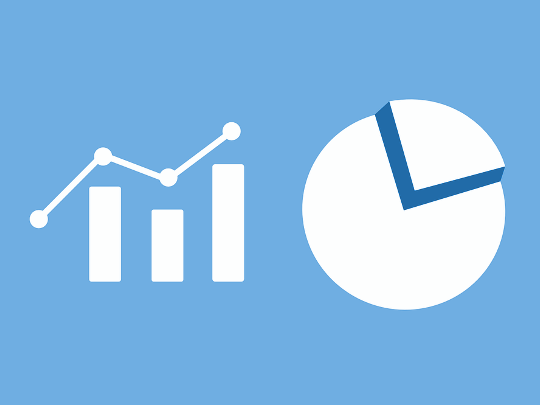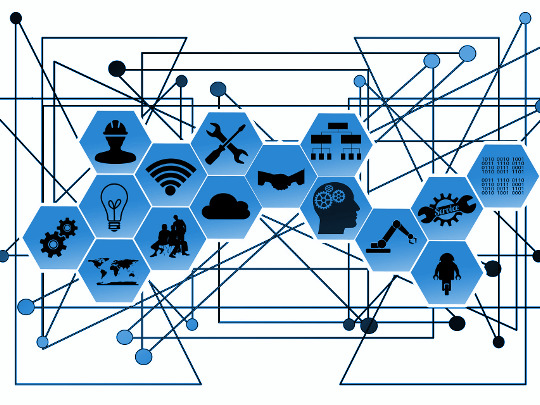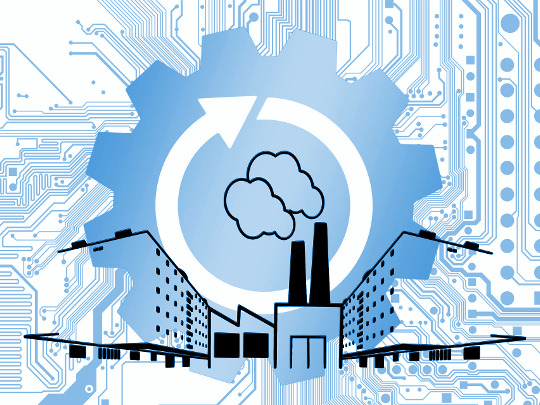
Human history has seen three significant technological revolutions. The first was caused by the invention of the steam engine, the second by the introduction of the assembly line, while the third and most recent came along with the adoption of electronics and information technology.
We are now on the cusp of a fourth industrial revolution. The cause?
Intelligent and networked systems for producers – also known as 'smart factories'.
Integrating information and communication technology into every aspect of industry will allow entire production processes to become self-organizing. Continuous communication and cooperation, starting with the worker and ending with the finished product, will lead to an optimized value chain.
New technological assistants will provide producers with an easy to understand summary of data that will allow them to follow the reasoning behind changes in an automated production chain, or to decide on changes themselves.
The greatest advantage Industry 4.0 offers is the significant reduction of costs, while at the same time providing new avenues for individualization. Focusing on optimization from the very first step of production will reduce product defects, while continuous measurements and communication decrease the risk of loss of production due to technical failures.
Can your company profit from Industry 4.0? This depends on both the size and nature of your production.
A small company with only a hand full of employees or a small number of machines is unlikely to get the most out of this approach.
Large production chains on the other hand are exactly what Industry 4.0 is designed for, especially if they suffer from frequent occurrences of product defects.
Either way, our professional assessment and analysis will determine whether your company can profit from this new industrial revolution. If it can, we will make sure to find an approach that satisfies your individual requirements while saving you money in the long term.

The two core concepts of our approach are measurement and communication. In practice, this means that we design and build our own measurement tools. Using these we gather data on the rate and frequency of product defects and unwanted downtime, as well as the myriad of possible causes. These range from ambient or local temperature to the speed at which individual production processes are executed. This 'Big Data' is subjected to statistical analysis, which allows us to identify the causes and enables you to rapidly adapt your production to changing circumstances.

A good example of an implementation of Industry 4.0 and Big Data is the maintenance program MAX by Thyssen Krupp AG. Using this tool, they have managed to revolutionize their approach to elevator maintenance. By installing devices that measure the elevator's acceleration, the speed at which the doors close and the overall condition of the components, the people of ThyssenKrupp managed to identify a number of symptoms that occur prior to an elevator malfunction. This allows them to repair or replace components before they break, significantly reducing downtime and inconvenience for the user.
This example also shows that firms with continuously running machines doing extremely strenuous
work benefit the most from this kind of monitoring.

Your customers can rely on your company.
But even the best machine will wear down with time.
Your production will stand still until repairs can be made.
Your customers can rely on your company.
Continuous monitoring provides real time data and assists with maintenance.
You avoid unwanted downtime and can continue your production.
Big data is, at its core, exactly what it sounds like: vast amounts of information. And the greater, more complex and more prone to change this data set is, the more effort and ingenuity is required to analyze it. This is why using Big Data always goes hand in hand with the use of data mining, meaning the use of specialized software to search and filter the overwhelming amount of data for relevant facts, to detect patterns and to test models, statements and hypotheses.
Three steps are required to ensure that the gathered data is relevant:
Collection, Analysis, Presentation.
Each of these steps comes with its own challenges.
Increasingly complex products and production processes require the monitoring of a rising number of variables, leading to an ever growing set of data in desperate need of organization and structure.
We can provide that structure, and the use of statistical analyses ensures that even the most complicated circumstances are prepared and presented in a way that is meaningful.
And almost in real time.
The need to process many different data sets makes effectiveness especially important to us. This is why our first task is always the optimization of data bases and data storage, which significantly increases the speed with which data can be imported. This also helps us with the rapid analysis of different information types.
As a result, the search for and retrieval of data is greatly accelerated, to the point that even multiple concurrent queries can be processed and answered without a problem.
It is not always necessary for all data that is gathered to be anonymous, especially because most of the data is highly specific and unlikely to benefit anyone else. A process which monitors the general condition of machines, for example, does not require a great deal of encryption or anonymization.
Personal data, on the other hand, is a different matter entirely. According to the IDC, only half of all data that should be protected actually is protected. We are determined to do our part in changing that fact.

CEO
Adress
Kirchenweg 6
84137 Vilsbiburg
Contact
08741 5418337
info@palmarius.com